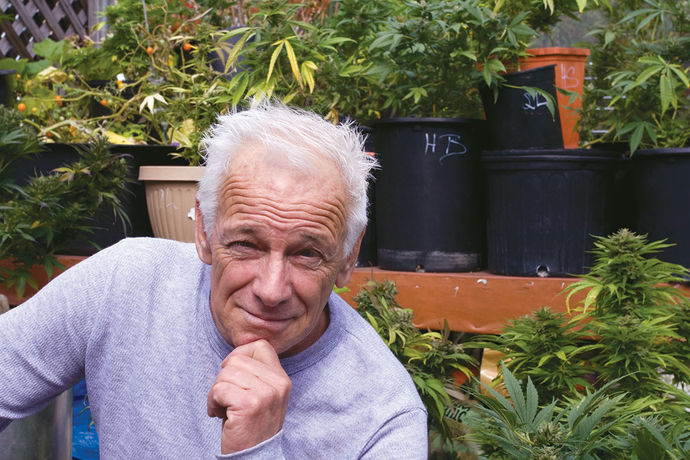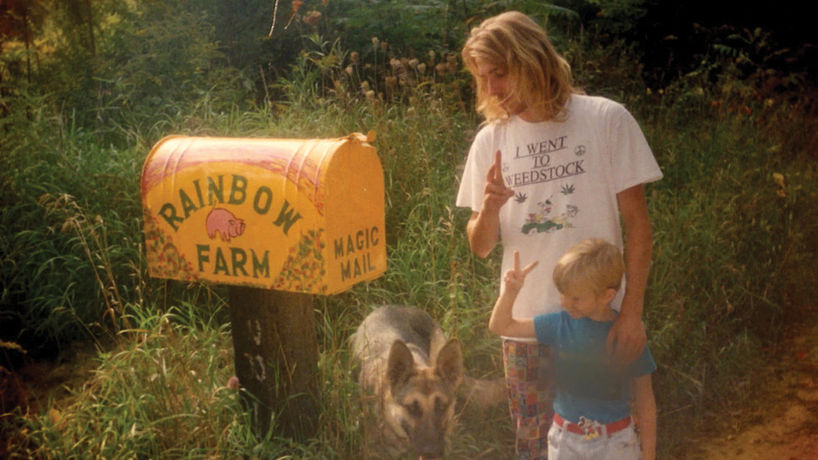Since the early days of American cinema coincided with the dawn of Cannabis prohibition, it makes sense that some filmmakers would look to the sensationalized stories of marijuana mayhem and madness portrayed in the “yellow journalism” of the era as inspiration for their films. In the 1930s and ‘40s, a number of low-budget, anti-pot propaganda films were produced that were hysterical in both senses of the word: Originally, they were intended to induce a “hysteria” (overwhelming fear and panic) among the American public about marijuana; in modern times, however, they’re hysterical in the humorous sense due to their campy delivery and absurd exaggerations.
What follows is a deep dive into history’s most notable “drugsploitation” flicks – most of which have several names, as they were frequently repackaged and re-promoted under different titles in different regions.
Marihuana
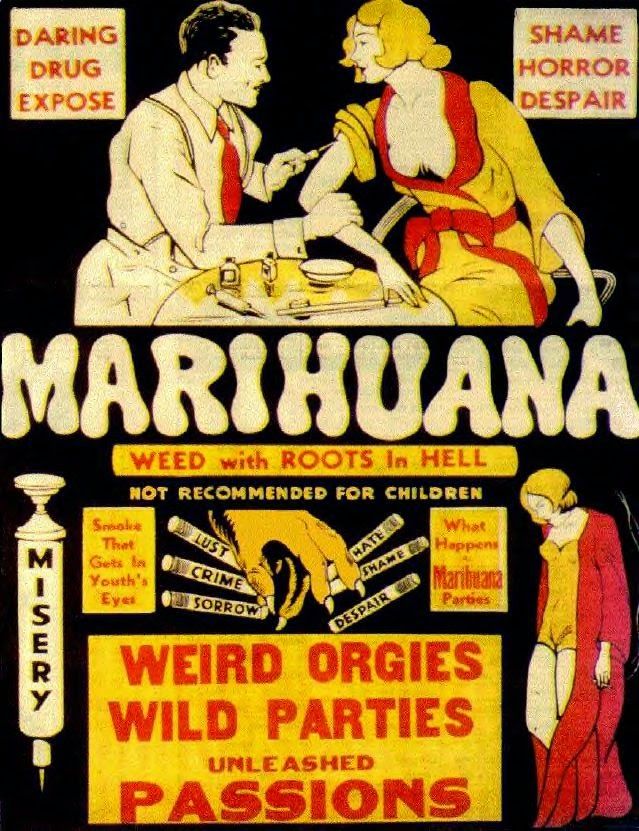
The first of the pot propaganda flicks to make it to the big screen in May 1936, “Marihuana” (a.k.a. “Marihuana: The Devil’s Weed,” a.k.a. “Marihuana: The Weed With Roots in Hell”) tells the tale of a high school girl named Burma who’s “led to ruin after befriending a drug dealer who invites her to a party at his beach house.”
After Burma and some other girls get drunk and smoke weed at the party, one ends up drowning while Burma becomes pregnant. After she pressures her boyfriend to marry her, he gets hired by the dealer to unload some smuggled drugs at the docks and ends up being killed by the cops. Upon hearing the news, Burma runs away from home, has the baby and puts it up for adoption – then becomes a drug dealer herself. After graduating to heroin and becoming a junkie (the classic “gateway drug” theory), she tries to kidnap her sister’s new baby and hold it for ransom, only to find out it’s actually her own.
“Marihuana” was produced by the pulp fiction power couple of Dwain Esper and Hildegarde Stadie. Stadie spent her childhood traveling around the country in a horse-drawn wagon with her opium-addicted uncle – a doctor turned snake oil salesman who shamelessly used her to hawk his cure-all, Tiger Fat (including having a pre-teen Hilde appear in front of customers nude except for a python). In 1920, she married Dwain Esper, a former carnival barker who, in 1932 – despite having no training or experience in filmmaking – began a new career as a movie director after acquiring a small studio in a loan default settlement.
With Hilde as his writer and co-producer (and often on screen in cameo roles), Esper began cranking out outlandish B-movies designed to entice and frighten, including 1933’s “Narcotic” (a tale based loosely on Hilde’s uncle) and 1934’s “Maniac” (a.k.a. “Sex Maniac”). Esper not only side-stepped the Hollywood movie industry and their decency standards (known as the Hays Code, which prohibited dialogue pertaining to anything related to sex, as well as the depiction of scantily-clad women and drug use), but the theater system itself. In 1934, he and Hilde formed their own distribution company: Road Show Attractions. They would travel around showing their films in pop-up theaters and tents like a circus sideshow attraction, then hightail it out of town before local law enforcement could slap them with obscenity or indecency charges. This practice led Esper to crown himself the “king of the celluloid gypsies.”
In addition to their own films, the Espers occasionally bought the rights to other low-budget films, which they would then spice up with more sex and drug scenes and re-release under new titles. One such film was the drugsploitation classic, “Reefer Madness.”
Reefer Madness
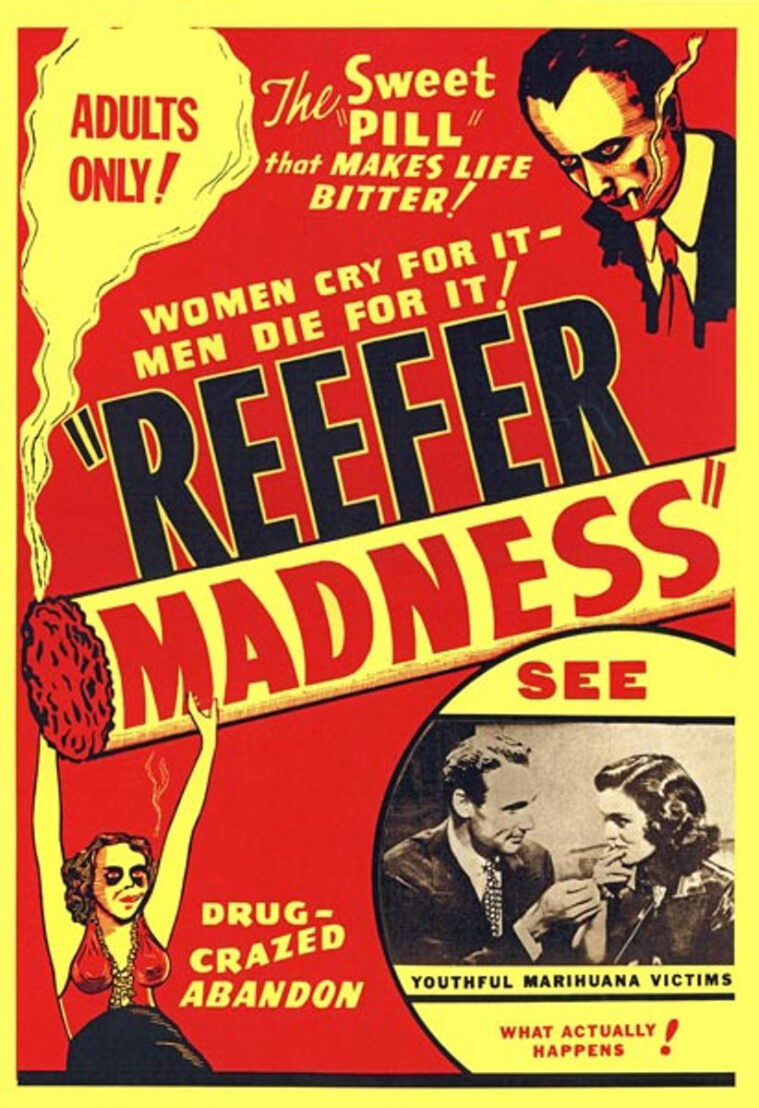
Originally entitled “Tell Your Children,” the film that came to be known as “Reefer Madness” was first released on July 12, 1936.
The story begins with a high school principal telling a PTA meeting about a group of students lured by pot pushers to a “reefer house” where they smoke marijuana, become immediately hooked, and begin hallucinating and going mad. Under the influence, they commit various violent crimes, including running over a pedestrian, shooting a teenage girl, beating a man with a stick, attempted rape, and suicide. The film ends with the principal cautioning the parents in the meeting (as well as those watching through the camera lens) that “the next tragedy may be that of your daughter… or your son… or yours!”
Directed by Louis J. Gasnier, the film was financed by a Christian church group to “educate” parents about the supposed dangers of Cannabis. But in 1936, shortly after its release, it was acquired by Esper, who added some salacious new shots (naturally) and screened it on his underground film circuit until the early 1950s under different titles in each region of the country: In the South it remained as “Tell Your Children;” in the West he called it “Doped Youth;” in Pennsylvania and West Virginia it was known as “The Burning Question;” but it was in New England that was given the name it would be remembered by, “Reefer Madness.”
Widely considered one of the worst movies ever made, “Reefer Madness” passed into the public domain and was largely forgotten by the 1970s… that is, until it was rediscovered by NORML founder Keith Stroup – who began hosting screenings of the absurd propaganda pic at colleges to raise money and interest in the budding legalization movement. Today, it’s the most well-known drugsploitation movie by far.
Assassin of Youth
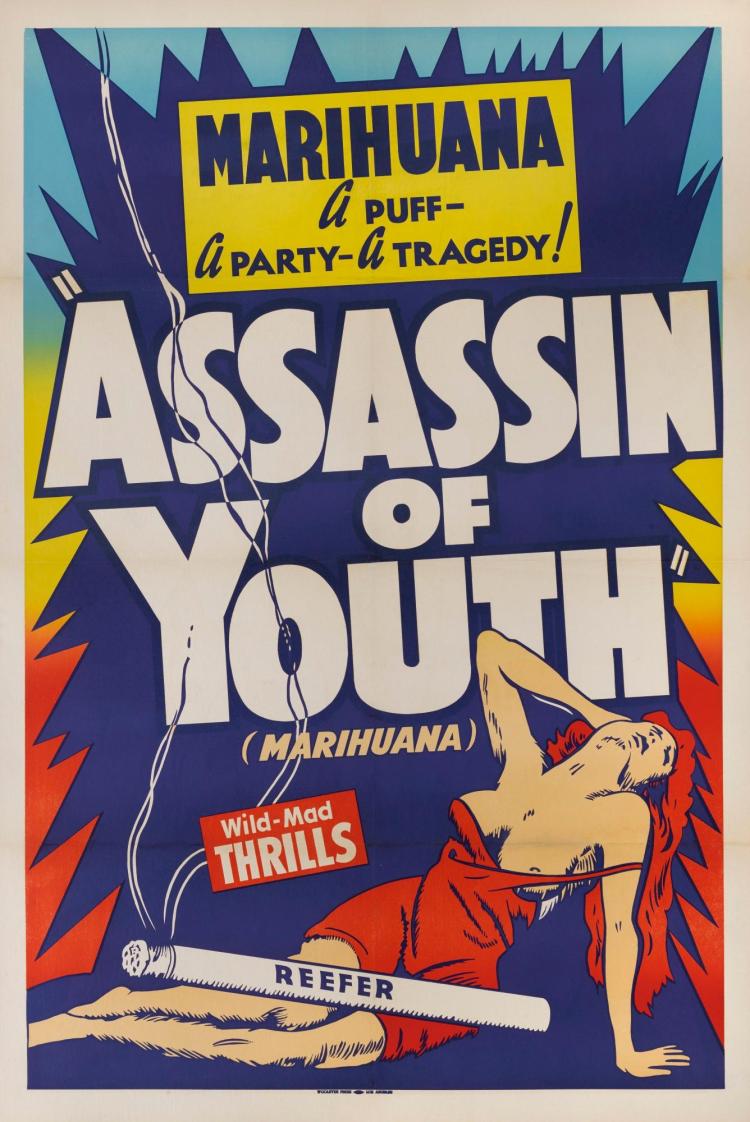
Directed by Elmer Clifton, “Assassin of Youth” (a.k.a. “The Marijuana Menace”) is another “cautionary tale” about a young journalist named Art who’s tasked by his editor to investigate the death of a rich old woman killed in a car crash with a “marijuana-crazed youth.” Posing as a soda jerk, the reporter infiltrates a gang of “dope fiends,” attends their wild parties and falls for the woman’s virtuous granddaughter Joan, who’s set to inherit her fortune. Joan agrees to help him but is framed as a degenerate by her promiscuous, pot-dealing cousin Linda, who drugs her and sets her up in compromising positions to get her disinherited through a “morality clause” in the will. Spoiler alert: Art ends up saving Joan’s reputation at the last minute in a dramatic courtroom scene in which he exposes Linda and her suppliers and reads aloud from his article in which he decries the evils of marijuana, which he calls the “assassin of youth” and the “scourge of our country.”
Released in January 1937, the film shares its name with the infamous anti-pot propaganda article published in The American Magazine in July of that same year – an article written by Federal Bureau of Narcotics director Harry J. Anslinger. The article details various marijuana-related crimes drawn from Anslinger’s “gore files,” similar to those portrayed in this film.
While not as overtly absurd as some of its counterparts, “Assassin” shares their paranoia-inducing purpose – apparently effective, since Anslinger’s Marijuana Tax Act (essentially outlawing Cannabis) was signed into law later that year.
Devil’s Harvest
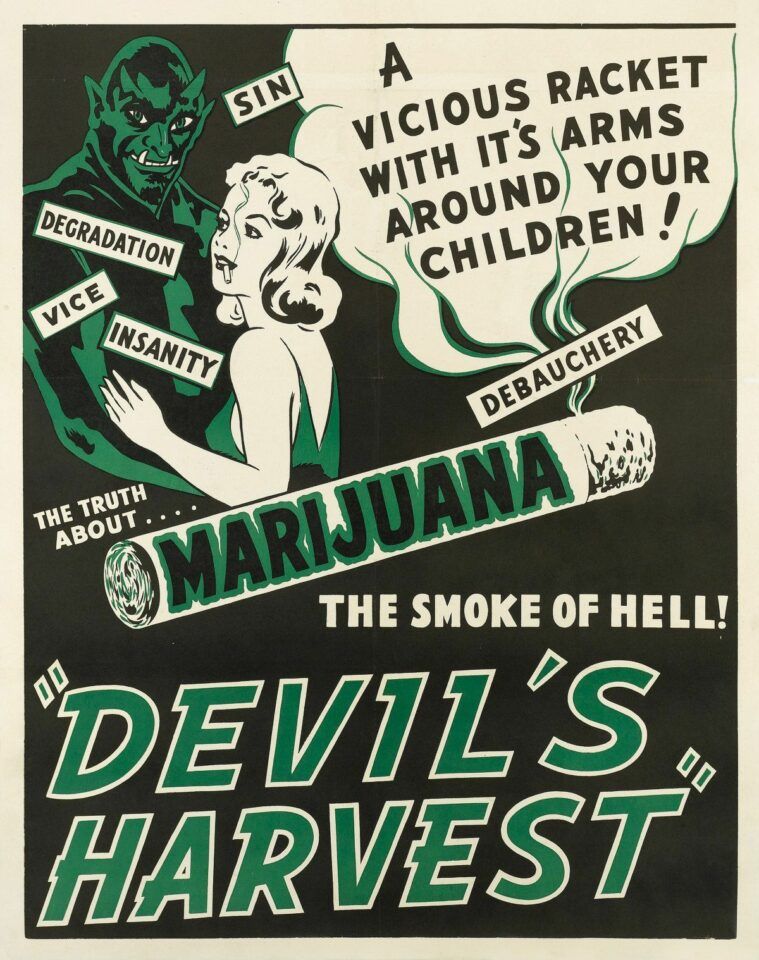
Released in 1942, “Devil’s Harvest” is a lousy gangster movie that uses marijuana as a gimmick to drum up an audience.
Directed by Ray Test, this flick tells the story of Kay O’Farrell – a high school girl who gets sucked into the underworld of organized crime. On the promise of a dancing gig, Kay is lured to a wild party, where gals strip down to their undies to dance and get busy after smoking the “loco weed.” After a brawl breaks out and a girl dies, police question all the “kids” from the party (who all look 40 years old) and manipulate Kay into helping bust the marijuana ring. She’s soon recruited by the racketeer suppliers to dance at their nightclub, where the top mobster Larry falls for her. It ends with a showdown in Larry’s office between him and a rival gangster named “Snuffy,” in which they both end up dead. Through it all, Kay remains bizarrely calm and unaffected by everything going on around her.
With its flimsy plot, cheesy dialogue, goofy acting, bad lighting and sloppy editing, “Devil’s Harvest” certainly earns its place in the drugsploitation Hall of Shame.
Wild Weed

Directed by prolific B-movie maker Sam Newfield (a.k.a. “Sherman Scott”), “Wild Weed” regurgitates the same tired tropes of its predecessors: a dancing girl who gets corrupted by marijuana at a wild party, becomes romantically involved with her dealer, and ends up in ruin. In this case, it’s an orphan chorus girl named Anne Lester who is pressured by a dealer named Markey into smoking reefer at a “tea party.” After Markey seduces her and gets her hooked, she loses her job and goes to work for him selling “tomatoes.” When her brother Bob (who she’s putting through college) discovers what’s going on, he – ridiculously – hangs himself. Soon after, Anne is arrested, shown a few druggies and the asylums where they end up, and spends a couple of months in jail before cleaning up her act and helping the cops nail Markey.
This movie also had several different titles: It was initially released as “Wild Weed” in July 1949 through Eureka Productions and was not well-received (“Never did vice seem so devoid of enchantment.” – NY Times). It was later acquired by Hallmark Productions, who made some changes and re-released it – first, as “The Story of Lila Leeds and Her Exposé of the Marijuana Racket” (more on that in a minute), then later as “She Shoulda Said No!”
Hallmark had more success with it, thanks to a new promotional poster featuring racy photos of its leading lady and some fabricated letters to various community leaders claiming the film was a public service sanctioned by the U.S. Treasury Department.
However, the most interesting thing about this film is that it was purportedly inspired by the life of its lead actress, Lila Leeds. On September 1, 1948, the stunning 20-year-old starlet was busted smoking weed with actor Robert Mitchum in her home. The two were charged with felony narcotics possession and sentenced to 60 days in jail plus five years probation. Unfortunately, the stigma of her arrest led to her being blackballed; broke and desperate, she reluctantly agreed to star in “Wild Weed” – which turned out to be her final role. After that, her real life ironically ended up mirroring those depicted in drugsploitation films: she went to prison, became a heroin addict, was involved in a car accident, had parole violations, and eventually turned to prostitution.
All of which shows once again that, tragically, what truly ruins lives is not using Cannabis – but getting arrested for it.


